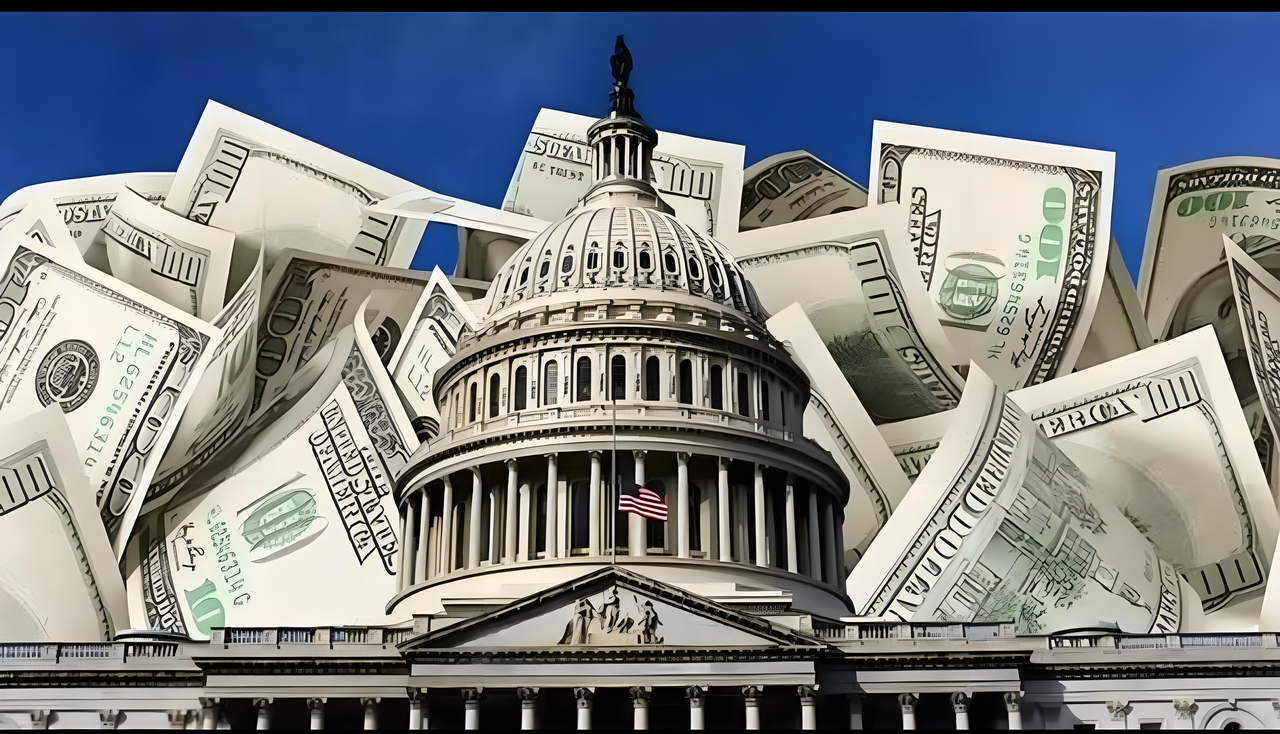US crypto strategic reserves: "Digital gold" revolution that reshapes the global financial landscape

Reprinted from panewslab
03/06/2025·1MThe Origin of [Strategic
Reserves](https://www.techub.news/CN/articleDetail/2ebd0b60-e9cd-471f-96ce-fba2fc6ef480) : National Resource Game from Oil to Bitcoin
In 1975, the United States established strategic oil reserves to deal with the oil crisis, and is still the core pillar of global energy security. In 2025, this model was copied to the crypto field - the Trump administration proposed to include cryptocurrencies such as Bitcoin ( BTC ) into national strategic reserve assets, marking the United States' leap from "oil hegemony" to "digital asset hegemony".
The starting point of this strategy can be traced back to July 2024, when Senator Cynthia Lummis submitted the BITCOIN Act of 2024, planning to gradually establish a national reserve of 1 million BTC through annual procurement. Subsequently, Trump made the "strategic cryptocurrency reserve" a core commitment in his campaign, claiming to "make the United States the global cryptocurrency capital." As of March 2025, the U.S. government has held about 200,000 BTC (worth approximately US$21 billion), mainly from criminal assets confiscated by the Department of Justice.
The path to policy implementation: a dual-track game between executive
orders and Congress legislation

Currently, the US's strategic crypto reserves face two major paths:
" Breakout" of executive orders
Trump plans to pass a presidential executive order to instruct the Ministry of Finance to use the Foreign Exchange Stabilization Fund (ESF) to directly allocate BTC to bypass the Congressional approval process. This path can be started as early as the second half of 2025. The advantage lies in its high efficiency, but it faces legal controversy: ESF has traditionally been used to stabilize the dollar exchange rate, and the purchase of crypto assets may lead to unconstitutional lawsuits.
The "protracted war" of Congress legislation
"BITCOIN Act" needs to pass the votes between the Senate and the House of Representatives, and the core disputes include:
Source of funds: Whether to use the fiscal budget or issue special financing for treasury bonds;
Reserve size: radicals require 1 million BTC (about 1 trillion US dollars) within five years, while conservatives recommend controlling 1%-5% of government bond assets;
Hosting mechanism: The federal government builds its own cold wallet, or entrusts compliance agencies such as Coinbase to manage it.
Global market volatility: Bitcoin's "nationalization" and crypto asset
pricing power
The US crypto strategic reserve has triggered a chain reaction:
Coin price fluctuated sharply: On March 3, 2025, after Trump announced that his reserve plan would be included in tokens such as XRP, SOL, and ADA, the relevant currencies rose by more than 15% within 24 hours;
Sovereign funds follow the trend: Norwegian sovereign funds, Singapore GIC, etc. have begun to evaluate BTC allocation plans, pushing Bitcoin market value to exceed US$2 trillion;
Regulatory paradigm changes: The US SEC abolishes the Employee Accounting Announcement 121, which hinders the development of crypto, and sets up a special working group to coordinate policies.
It is worth noting that this strategy is reshaping the US dollar system: BTC reserves may become a "new type of anchoring asset" outside of US bonds, and consolidate the global settlement currency status through the "BTC-USD" dual reserve model.
Controversy Whirlpool: Four Challenges of Strategic Reserves
Despite the tempting prospects, the US crypto strategic reserves still face multiple questions:
Technical risks: Security risks such as BTC private key management and 51% attacks may threaten national financial security.
Conflict of law: The Federal Reserve openly opposes the government-led hoarding of BTC, emphasizing that "monetary policy should not be tied to crypto assets."
Suspected of market manipulation: After the US government holds a large amount of BTC, it may affect the currency price through policy regulation, causing controversy about "being both a referee and a player".
International resistance: China and the EU criticize the United States for "crypto unilateralism" and plan to promote global crypto regulation coordination under the IMF framework.
Future Deduction: The Triple Changes in Crypto Geopolitics from 2025 to
2030
Digital gold standard war: The United States vigorously promotes BTC as a reserve asset, while China is betting on the central bank's digital currency (CBDC), and the EU explores ETH compliance paths to form a three-legged pattern.
Crypto Cold War 2.0: If the United States successfully establishes BTC reserves, it may impose "crypto sanctions" on "de-dollarized" countries such as Iran and North Korea, freezing their on-chain assets.
The confluence of Wall Street and Silicon Valley: venture capital institutions such as a16z are accelerating lobbying for Congress, promoting the inclusion of the "DeFi agreement into the strategic reserve ecosystem" and realizing the in-depth binding between capital and policy.
Hong Kong's response: Opportunity window for the Web3 Compliance Hub
Faced with the impact of the US crypto strategic reserves, Hong Kong is consolidating its Web3 position through three major strategies:
Accelerate the issuance of VASP licenses: 4 new licensed exchanges were added in December 2024 to attract inflows of compliant capital in the United States;
Launch a stablecoin sandbox: JD.com, Standard Chartered and other companies participate in the test to explore interoperability paths with US dollar stablecoins;
Establish a US$100 million ecological fund: focus on incubating BTC Layer2, compliant derivatives and other tracks to hedge against the risks of US policy volatility.
Conclusion: The "Bretton Woods Moment" in the crypto era
The US crypto strategic reserve is not only a change in asset allocation, but also a "silent war" in the competition for currency sovereignty in the digital age. Regardless of whether this plan can be finally implemented, it has forced global sovereigns to reevaluate the strategic value of crypto assets - just as the Bretton Woods system established the dollar hegemony in 1944, 2025 may become the first year of the " digital gold order".
Note: All data and policy progress in this article are from public
documents of the US Treasury Department and Congress and research reports on the crypto industry.


 chaincatcher
chaincatcher